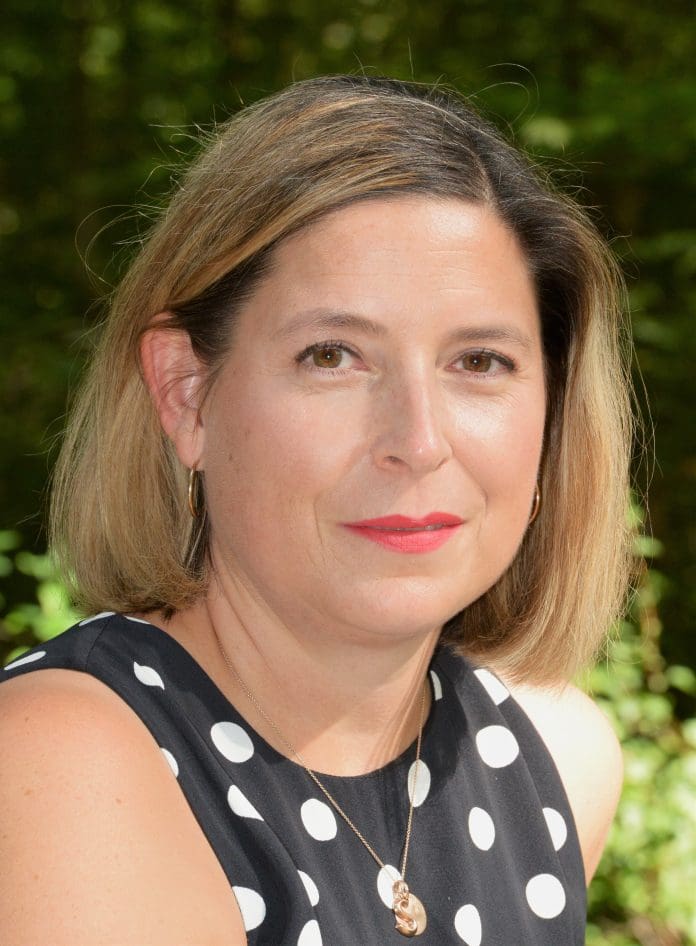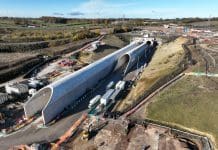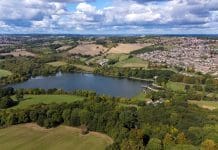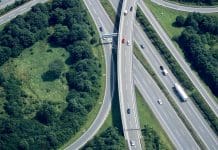PBC Today sat down with Susanne Trierscheid, vice president of Modelling, Facilities, and Engineering at Bentley Systems, to talk about the additional benefits seen in infrastructure projects that use Bentley’s iTwin Platform
Bentley System’s annual Year in Infrastructure and Going Digital Awards took place in Singapore on 11-12 October 2023, celebrating projects that have utilised digital twin software such as Bentley’s iTwin, to deliver a variety of infrastructure projects across the world.
How did you find YII2023?
It was intense, as always. There’s a lot of information. I was part of the team producing some of the information, so I knew a good bit beforehand. But all the industry breakouts and all the finalist presentations make the whole thing materialise itself.
What you saw on several PowerPoints in the submissions phase is not the same as hearing somebody present a project that they’re passionate about.
You hear that from every person at Bentley. It is amazing to see what users really do with our software, because we are usually stuck in the software production cycles. When you see the real-life result of what you procured, it is incredible.
Which of the Going Digital Awards finalists was your favourite?
I have a soft spot for Singapore in general because I’ve been here for a while, so anything Singapore is always something I’m rooting for. For example, the [Rail & Transit category winner] Johor Bahru–Singapore Rapid Transit System (RTS), a cross-border project that will connect Johor Bahru in Malaysia with Woodlands, Singapore. We started supporting it when I was still living in Singapore, and it is fantastic to see it being realised now.
But the first of the Water and Wastewater project finalist presentations – Geoinfo Services, which enabled 24×7 Access to Clean Drinking Water – was incredible. That project, as well as Rajghat Multi Village Rural Water Supply Scheme – both projects based in India in that category – had incredible social benefits. I found that aspect incredibly moving and inspiring.
What kinds of socioeconomic benefits are we seeing as a result of these infrastructure projects?
In many places in the world, men are out earning, and women do all the manual chores, meaning there’s no time for them to get an education.
Any automation that can reduce the time spent on manual labour makes a big difference. In these projects, immediate access to clean water means that women don’t have to spend three hours fetching and carrying water, giving them more time to spend on education or earning money.
Other than that, I just hope by making these results more visible, that it also inspires women to go into technical professions, which are traditionally done by men. Because I think women want to support other women. So, if this is the means multiplying the value-add that you can bring to society, I think that is valuable.
What does your role involve?
I am what we call a product executive. We have many of these. This means that we are responsible for a product’s direction and vision.
First comes the product management. We try to devise user problems or anticipate them. Sometimes it’s a hypothesis that we then need to verify. Then we do quite a bit of research with users, and then we start developing a product through several cycles, with development teams for which we are responsible. Once the product is deployed, we hand it over to other departments in the company to enable the actual sales. A few years later, we get to see the outcome of what they do with our products at events like these.
My portfolio covers anything you can see modelled aboveground, vertically, like built structures, buildings, and plants. The flagship product for our team is MicroStation, which is a product, but also a platform for every other open application.
Where do you see infrastructure driving future developments? And what role do you think Bentley will play in it?
Sustainable infrastructure is key. And the better you can monitor a build structure – and that can be any part of infrastructure – the more you know how effective and efficient it is.
Digital twins are one of our key directions because of this possibility. You can use them to learn about any errors or problems a lot sooner.
For example, the New Bullards Bar Dam that was highlighted in the keynote speech – the dam operators can’t look at the whole of the concrete, but if you can monitor that with drone data and the structure itself is intelligent, that helps a lot, right?
There are thousands of types of infrastructure, as we saw at Year in Infrastructure, and improving communication is always a challenge. It always sounds easy when we present it, but just to keep that digital twin up to date is a major challenge for our users, because a lot of it is done manually and that process is error prone.
That is a challenge we are looking at – making it easier to keep the digital twin evergreen, and at the same time trying to make it more self-sufficient and more intelligent. That could be with an element of artificial intelligence, automation, or machine learning.
As Greg [Bentley] indicated, a copilot with design and coding is something we are interested in because the industry is struggling to find qualified personnel with the right profile. We know our customers are struggling. It’s hard to get enough people to work on those projects. So how can you make them more efficient?
Projects are getting more complex, and they must be greener and more efficient. There are many points that intersect and influence each other in the software industry. You can only deal with one or two at a time, to be honest. But we are constantly thinking about it.
What will you take away from this year’s event?
As we saw with the water projects, I find it so amazing how tangible these benefits can be, because for us, it’s find a software error, a bug, try to fix it – but the work impacts human lives. [Using a digital twin makes] it possible to see exactly when a pipe fails to make sure that precious water isn’t wasted.
If you have that fully intelligent, up-to-date digital twin that really adds value to people’s lives, that is something very rewarding to see.






![[Video] Fireco: 80 new fire doors required for residential flats in London](https://www.pbctoday.co.uk/news/wp-content/uploads/2025/04/2024-06-01-Lords-view-one_1200x750_004-218x150.webp)







